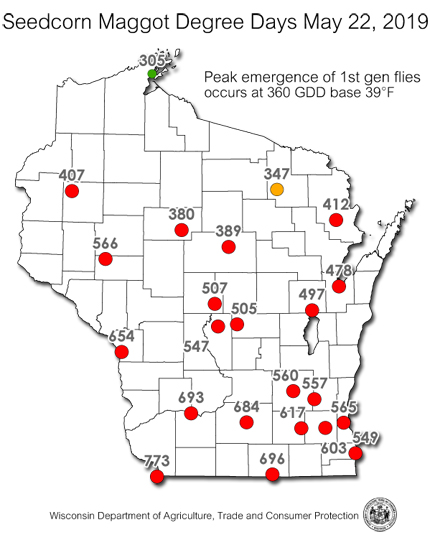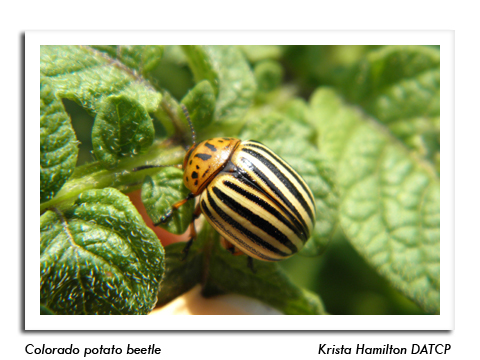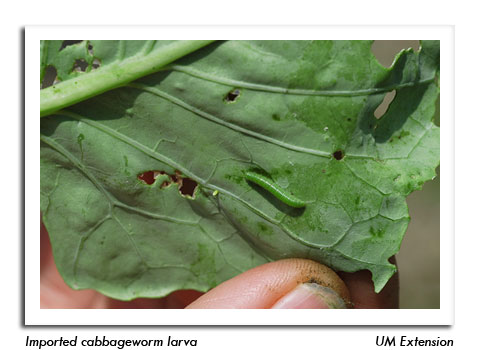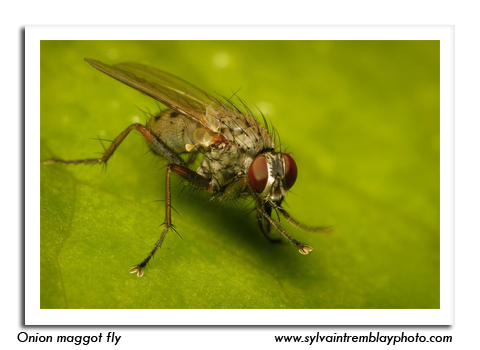
 |
|
|
Vegetables
Volume 64 Number 4 Date 05/23/2019 SEEDCORN MAGGOT - Damage to susceptible vegetable crops such as beans, corn and cucurbits remains a strong possibility. This spring's cool, wet weather pattern has prolonged the adult emergence period and delayed seed germination, creating favorable conditions for maggot infestation. Poor stand establishment is an early sign of maggot activity. Pupation of first-generation maggots, also the brief fly-free period between the first and second generations, should begin around 846 degree days (sine base 39°F), or by May 29 near Madison. The map below shows the current SCM accumulation is 696 at Beloit, 684 in Madison, and 504 at Hancock. BLACK CUTWORM - Larvae produced by moths that arrived last month are expected to reach the damaging late-instar stages by May 25. Cutworms feed on the stems of young plants at the soil line and can be destructive where transplants are planted through black plastic or a similar weed barrier. Heat that accumulates under the plastic may attract and provide a protective covering for cutworms, making them more difficult to control. Beans, cabbage, carrots, celery, corn, lettuce, peas, peppers, potatoes and tomatoes are all at risk. Minor cutworm feeding can usually be tolerated and damaged plants replaced. Physical barriers such as tin cans or paper cups with bottoms removed are also effective. Economic thresholds have been established for the following vegetables: SNAP BEANS: two larvae per row foot; POTATOES: four larvae per row foot; LEAFY GREENS: 3% of stand affected. Insecticide rescue treatment using either sprays or granules in home gardens is usually impractical. COLORADO POTATO BEETLE - Overwintered beetles are likely to begin dispersing from hibernation sites to plants near field edges next week. Oviposition on potatoes, tomatoes, eggplant and other hosts should begin before the end of the month. The bright orange-yellow eggs are deposited in clusters of 15-30 on the undersides of leaves. Egg hatch occurs in 4-9 days. IMPORTED CABBAGEWORM - Adults are depositing eggs on cruciferous weeds and available early-planted cole crops. Close examination of transplants for eggs and small larvae is critical during the oviposition period. Infestation levels in cabbage that exceed 30% at the transplant to cupping development stages may require control. ONION MAGGOT - Peak emergence and egg laying by first-generation flies can be anticipated as 680 degree days (base 40°F) are reached in the next few days. The GDD accumulation was 684 near Beloit, 673 at Madison, 640 near La Crosse, 521 in Hancock, and 405 at Wausau as of May 22. Damage from the resulting first-generation maggots usually becomes evident around mid-June as onion seedlings start to wilt. Infested plants, when pulled, often break just below the rotting stem. Rotating this year's plantings as far away as possible from last year's onions is the most basic approach to onion maggot control. Preventative soil insecticides may be considered if 5-10% of last year's crop was damaged by onion maggot. -- Krista Hamilton, DATCP Entomologist 




|
|
|